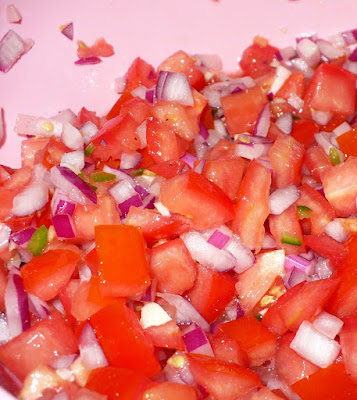
Despite what you might infer from the title of this post, I don't necessarily consider this attempt a failure--I simply enjoy alliteration. Nonetheless, it is most certainly not a successful attempt either, except in the sense that it gives me more ammunition with which to go back next time and try to build upon my previous attempts. Which, of course, is the whole point of my documenting these instances, so I suppose it was a total success; just not quite what I had hoped for.
Allow me to explain. As I mentioned in my previous frozen project, I have not had great success with my relatively new ice cream maker attachment for The KitchenAid. The KitchenAid itself is, of course, fantastic, and has become a staple of most anything I produce, allowing me to remain my lazy self while still enjoying the fruits of much labor. However, all of my attempts at ice cream thus far (particularly those based on corn starch, i.e., the ones that are practical to make, as I don't keep a dozen egg yolks lying around most of the time) have resulted in delicious chunks of very solid ice that resist the infiltration of a spoon with impressive tenacity. My repeated experiments have given me some insight into this phenomenon, but I am still undecided as to whether I should blame my freezer or my ice cream making technique; consequently, I must continue attempting until I find something that works right.
This attempt was no different, as I took an existing recipe (stolen this time from The Kitchn) and tweaked it to help compensate for my previous experiences. This tweaking, as you'll see, did indeed help, but not as much as I would have hoped.
Lemon Ice Cream
(As stolen from the folks at The Kitchen)
Ingredients
1.5oz Cream cheese
3 1/4c Half and half
1tbsp Corn starch
1/3c Sugar
1/4c Brown sugar
1.5tbsp Corn syrup
1/4tsp Salt
1/2tsp Vanilla extract
1tbsp Vodka
1 Lemon
Procedure
1) Place the cream cheese in the mixer bowl and process until it is softened and resembles something like cake icing.
2) In a bowl or cup, mix 2tbsp of the half and half with the corn starch. Ensure that no clumps of starch remain undissolved and set aside.
3) Place the remaining half and half in a skillet or saucepan and set over medium heat. Mix in the sugars and corn syrup and bring to a boil. Simmer just until the sugar and syrup are completely dissolved; this shouldn't take more than a minute or so.
4) Remove the mixture from the heat and whisk in the corn starch mixture. Return it to the heat and bring back up to a boil, stirring continously to prevent boiling over. Boil for about a minute and then turn off the heat.
5) Pour the hot mixture into the bowl with the whipped cream cheese and stir with a spatula to ensure that the cream cheese is scraped off the bottom and sides of the bowl. Add the salt, vodka, and zest from the lemon and set the entire mixture in the refrigerator to chill for at least 8 hours.
Note: Placing a cover of plastic wrap pressed against the top of the mixture will prevent a skin from forming on the top.
6) When the mixture has chilled, add the vanilla and the juice from the lemon to the mixture and stir thoroughly. Pour into your ice cream maker (making sure to start the churner first!) and proceed with whatever the maker's instructions say.
7) When the process is finished, scoop the ice cream into a sealable container and place in the freezer to cure for at least 4 hours.
 This picture is deceptive; the surface is actually very stiff. Oddly enough, it has a similar texture to that of over-solidified ice cream. Imagine that.
This picture is deceptive; the surface is actually very stiff. Oddly enough, it has a similar texture to that of over-solidified ice cream. Imagine that.Lessons Learned
I added the vodka to the recipe in hopes of keeping it softer, as the alcohol would inhibit the freezing process. This did work, in that compared to my previous attempts, it was slightly more pliable when I took a chisel and hammer to it. That said, it wasn't enough; next time I think I'll bump up the mixer speed (to incorporate more air) and add an additional tablespoon of vodka to see if the combination helps. However, I'll probably try a different recipe, as I actually wasn't blown away by this one. The lemon zest came out far too stringy (as it is wont to do) and gets stuck in my teeth. I think lemon ice cream works best as a side to a different dessert, which makes sense, as the Kitchn folks were having it alongside wedding cake. Having the ice cream straight up seems to lack balance; it needs something sweet to even it out.





















































